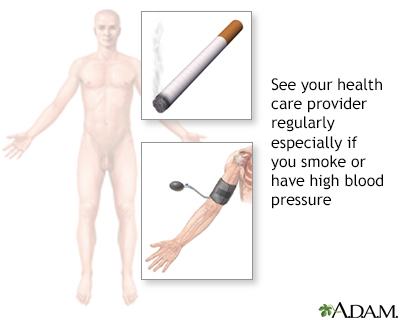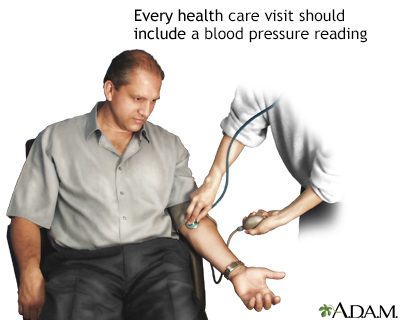Physical exam frequency
Definition
Even if you feel fine, you should still see your health care provider for regular checkups. These visits can help you avoid problems in the future. For example, the only way to find out if you have high blood pressure is to have it checked regularly. High blood sugar and high cholesterol levels also may not have any symptoms in the early stages. A simple blood test can check for these conditions.
Patient Education Video: Physical exam frequency
Alternative Names
How often you need a physical exam; Health maintenance visit; Health screening; Checkup
Information

All adults should visit their provider from time to time, even if they are healthy. The purpose of these visits is to:
- Screen for diseases
- Assess risk of future medical problems
- Encourage a healthy lifestyle
- Update vaccinations
- Maintain a relationship with a provider in case of an illness
Recommendations are based on gender and age:
- Health screening - women age 18 to 39
- Health screening - women age 40 to 64
- Health screening - women age 65 and older
- Health screening - men age 18 to 39
- Health screening - men age 40 to 64
- Health screening - men age 65 and older
Talk with your provider about how often you should have checkups.
Gallery


References
Atkins D, Barton M. The periodic health examination. In: Goldman L, Schafer AI, eds. Goldman-Cecil Medicine. 26th ed. Philadelphia, PA: Elsevier; 2020:chap 12.